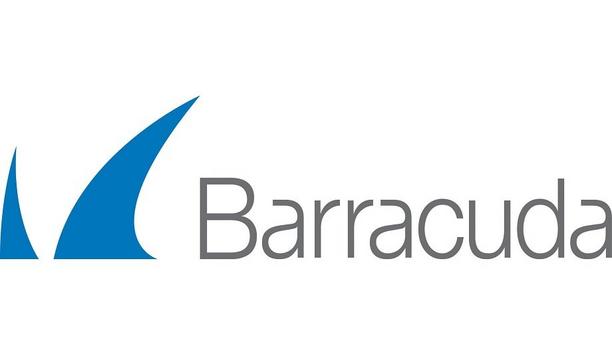Barracuda Networks, Inc. - Experts & Thought Leaders
Latest Barracuda Networks, Inc. news & announcements
Barracuda Networks, Inc., a trusted partner and major provider of cloud-first security solutions, announced that Neal Bradbury has been elevated to the role of Chief Product Officer. In this new role, Neal will lead a unified product, engineering, and advanced technology team to steer the vision for Barracuda’s comprehensive cybersecurity platform and drive customer-centric innovation across the entire portfolio. The platform is designed to protect customers across all attack surfaces including email, networks, data, and applications. Neal’s leadership “Neal’s business leadership skills and his deep understanding of our products, technology, business processes, and market strategy make him uniquely positioned to lead our product organisation and guide our platform strategy as Chief Product Officer,” said Barracuda President and CEO, Hatem Naguib. Hatem Naguib adds, “I’m confident that under Neal’s leadership, we will continue to find new ways to meet customers’ evolving business needs for scalable security and help our partners to safeguard their customers' SaaS applications, prioritise data protection, and improve efficiencies in the face of ever-evolving threats.” Roles in operations and technical support Neal has been with Barracuda for nine years, most recently as the SVP of Barracuda’s Managed Service Provider business. In this role, Neal led all functions, including product development, sales, and marketing. Before joining Barracuda, Neal worked at Intronis, which he co-founded in 2003. Between 2003 and 2013, Neal served as Vice President of Systems Engineering before moving on to a succession of roles in operations and technical support. In 2013, Neal became Vice President of Channel Development, where he was part of the team that led the company to a successful acquisition by Barracuda in 2015.
Barracuda Networks, Inc., a trusted partner and pioneering provider of cloud-first security solutions, published its Cybernomics 101 report, which examines the financial forces and profit motives behind cyberattacks. The new report reveals the average annual cost of responding to compromises exceeded $5 million. The report also raises the alarm over hackers exploring how they can use generative AI (GenAI) technology to increase the volume, sophistication, and effectiveness of their attacks. 50% of respondents believe AI will enable hackers to launch more attacks. The survey also identified that 71% of respondents had experienced a ransomware attack over the last year, and 61% paid the ransom. Insight from survey respondents The report offers insight from survey respondents who identified as ethical hackers Barracuda commissioned the independent research firm Ponemon Institute to poll 1,917 IT security practitioners who manage their organisation’s IT security functions or activities. They represent companies with 100 to 5,000 employees across various industries in the U.S. and a number of EMEA and APAC countries. The report offers insight from survey respondents who identified as ethical hackers on the most widely used attack vectors and which of these might offer the greatest return for attackers. Platform approach The research identifies the behaviours and proven security measures implemented by ‘High Performers’ that can serve as models for success. The report presents best practices that will help any organisation become more effective in identifying, containing, and recovering from attacks. They include adopting a platform approach to security rather than relying on a collection of disparate individual security tools or solutions, implementing privileged access rights to ensure that sensitive data remains accessible only to authorised individuals, and creating (and regularly rehearsing) a security incident response plan. Cybernomics 101 research report “While the Cybernomics 101 research underscores the harsh reality of suffering a data breach, it also underscores that organisations are not powerless," said Fleming Shi, CTO, Barracuda. Fleming Shi adds, "Proactive monitoring and attack detection to prevent progression to more severe stages like data exfiltration or ransomware is key. By preparing for these scenarios today, organisations can significantly reduce the impact and cost of these incidents.”
Barracuda Networks, Inc., a provider of cloud-first security solutions, will announce a new platform called Barracuda SecureEdge, a SASE solution that helps make hybrid and remote work easier to secure. Barracuda SecureEdge integrates Barracuda’s Secure SD-WAN, Firewall-as-a-Service, Zero Trust Network Access, and Secure Web Gateway capabilities. Single-vendor solution According to Gartner®, “By 2025, 80% of enterprises will have adopted a strategy to unify web, cloud services, and private application access using a SASE/SSE architecture, up from 20% in 2021." Using a single-vendor solution enables businesses and MSPs to strengthen their security posture and help reduce costs. Delivered as a service, Barracuda SecureEdge secures users, sites, and IoT devices, is easy to manage, and connects any device, application, and cloud/hybrid environment. Improves performance, reduces management complexity Cloud migrations, remote work, and the need for any-time, anywhere access make a SASE solution essential Additionally, improved security can be achieved and there are fewer risks of misconfigurations and interoperability issues that can happen between separate security systems. Currently, cloud migrations, remote work, and the need for any-time, anywhere access makes a SASE solution essential. The new Barracuda SecureEdge platform makes hybrid and remote work easier to secure, strengthens security, improves performance, and reduces management complexity. Applications Key use cases for customers include: Multi-layered network protection: Offers consistent policy enforcement for in-office and remote users, delivered from the cloud, on-premises, or in a hybrid environment. Protection against web-based threats: Protects against web-based threats, regardless of the location of the user. Secure remote access: Provides secure remote access for any user to any application and workload, with Zero Trust Access. Optimized cloud and application access: Facilitates optimised cloud and application access from any user or site by providing Secure SD-WAN capabilities.
Insights & Opinions from thought leaders at Barracuda Networks, Inc.
Many people, quite correctly, point to Salesforce.com—which launched in February of 2000—as the first example of cloud computing. In the years following, the term ‘cloud’ became so popular and was applied to so many products and service offerings, that it became almost meaningless. The result was cloud confusion in the business world and in the media. In one stark example from 2008, Oracle CEO Larry Ellison described news stories about cloud as, ‘complete gibberish.’ Endeavouring to provide some clarity on cloud, the U.S. National Institute of Standards and Technology (NIST) worked for more than two years to put together ‘The NIST Definition of Cloud Computing,’ which defines the five essential cloud computing characteristics and several ‘as-a-service’ cloud computing models. True cloud applications In the security industry, we talk about ‘True Cloud.’ It’s a term coined by Dean Drako, Founder and Former President and CEO of Barracuda Networks, now Founder and CEO of Eagle Eye Networks, IC Manage and Drako Motors. It refers to software running in the cloud that has the five essential cloud computing characteristics. It refers to software running in the cloud that has the five essential cloud computing characteristics A true cloud system is built from the ground up and is designed to function in the cloud for optimum cost and performance, using the Software as a Service (SaaS) model as defined in the NIST document. Despite the efforts of NIST and others, false cloud marketing persists. A CIO magazine article coined the term ‘cloudwashing’ to describe ‘the practice of taking legacy software and running it on a cloud instance, while calling it ‘true cloud.’ Physical security industry So, it should not be surprising that within the physical security industry, many vendors have been loosely using the term ‘cloud’ to market any kind of software deployment in a public cloud data centre (such as AWS or Azure) as a ‘cloud offering,’ implying some level of conformance to the NIST cloud computing definition and its SaaS model, even though there isn’t. Virtualisation and Orchestration are secrets to popularity of cloud popularity. In early 2022, DataArt reported that 94% of all business workloads are now processed on the cloud (75% is SaaS), and that half of all enterprise businesses expect to become cloud-native in 2022 (i.e., all or nearly all applications will be true cloud). A close look at the cloud computing essential characteristics reveals how and why cloud computing is becoming so popular. Operating system software The essential characteristics of cloud are established by using two software techniques The essential characteristics of cloud are established by using two software techniques: virtualisation and orchestration. Virtualisation is a technique of using software to make virtual computing environments that act like physical hardware, but they are really software representations of the capabilities of underlying hardware. This can be used, for example, to split a single physical server into multiple ‘virtual’ servers, making it appear as though each virtual server's operating system software is running on its own dedicated computer hardware and allowing each operating system to be rebooted and run independently. It can also be used in the opposite way, making the memory and processing resources of multiple computers work together as if they were a single large computer. Individual physical server The main difference between cloud virtualisation and traditional virtualisation is that very large, virtualised pools of computing resources are automatically managed by cloud virtualisation software, whereas traditional virtualisation relies on manual processes to adjust the sharing of computing resources on each individual physical server. Orchestration is the automated configuration and coordination of data centre computer systems Orchestration is the automated configuration, management, and coordination of data centre computer systems, applications, and services – including cloud computing services. Orchestration is used to automate complex IT tasks and workflows by simplifying the management of large-scale computing environments. This is what makes self-service possible for cloud-based systems. The five essentials These are the five essential characteristics that make high-performing scalable cloud systems and applications possible: Resource pooling, as described above, is the most fundamental cloud characteristic. A set of virtualised computing resources are shared by many subscribers whose resource usage is isolated from that of other subscribers, which is referred to as multi-tenancy. On-demand self-service allows security integrators or end-users to expand their subscriptions when they want to change the number of cameras, change a camera’s recorded video resolution, or update the number of days for a camera’s video retention. These selections are made in an application dashboard and don’t require human intervention from the cloud application provider. Broad network access means that all user application functionality is available from anywhere an internet connection is available, analogue or network cameras can be connected via cloud-managed appliances at a facility, and cameras made for connecting directly to the cloud data centre can be placed practically anywhere. Rapid elasticity allows computing resources to be increased or decreased instantly, for example, to maintain sufficient video retention for outdoor cameras, which has traditionally been a challenge even for motion-based recording, in weeks when rain, wind or other activity spikes up the percentage of time motion recording is activated. Measured service meters the resources provided to ensure that each subscriber only uses and pays for the resources allotted by subscription. Video management systems That’s why vendors of all types are eager to market their products and services as cloud The combination of these cloud characteristics means that video management systems are always provisioned correctly, eliminating concerns about system sizing and hitting CPU processing or storage capacity ceilings, and trying to prevent over-provisioning, which raises both fixed costs and variable operational costs in non-true-cloud systems. More than two decades after the first cloud computing systems were launched, the benefits of the cloud are well understood. That’s why vendors of all types are eager to market their products and services as the cloud. However, it’s important to look beyond marketing. Pooling, rapid elasticity, and on-demand self-service are not easy to deploy securely and globally. It takes years of cloud computing engineering experience and a considerable amount of investment to get it right. Will your system provide all of the benefits of a true system to both end-user and integrator? It’s worth taking the time to ask your vendor how the system conforms to the five essential characteristics of a true cloud system.
For the second year in a row, Canon made the biggest M&A move in the security marketplace in 2015. How could Canon top the industry shockwaves it created in 2014 when the Japanese giant acquired VMS company Milestone Systems? That’s easy: They bought Axis Communications for $2.8 billion in 2015. Although the Canon-Axis deal grabbed the most headlines and was easily the most shocking M&A announcement of 2015, it was certainly not the only big news on the mergers and acquisitions (M&A) front. Consolidation seemed to be breaking out all over, although the announcements were generally positioned as “strategic” rather than in response to market forces. Here’s a look at the Top 10 M&A stories in 2015, as covered by SourceSecurity.com: 1. Canon buys Axis Canon Inc. made a public offer to the shareholders of Axis Communications to transfer all of their shares in Axis to Canon. The total value of the offer was approximately $2.8 billion – Canon’s biggest acquisition to date. The move was further evidence of Canon’s confidence in the video surveillance market – and its intent to be a big player in the market. 2. Phybridge buys NVT Phybridge made its mark in the communications industry as a manufacturer of long-reach transmission technology. Looking to target the security industry as a lucrative new market for that technology, Phybridge agreed to purchase NVT, a well-known supplier of IP and PoE transmission. Phybridge is looking to leverage NVT’s position and reputation in the security market to boost its sales of long-reach PoE and Ethernet over new or legacy coax and UTP cable. 3. 3xLOGIC buys infinias Cloud-based integrated security solutions provider 3xLOGIC saw how well its products fit with those of infinias and announced acquisition of the cloud access control company. Adding access control is a natural extension of 3xLOGIC’s video products, including the VIGIL VMS and business intelligence, data management and cloud-based services. Access control was the “missing piece” in their overall product offering. FLIR Systems and DVTEL were late additions to our Top 10 M&As, with a $92 million acquisition in late November 2015 4. ASSA ABLOY acquires Quantum Secure ASSA ABLOY has made hundreds of acquisitions since 1994, and continued the pattern this year. Given ASSA ABLOY business unit HID Global’s focus on identity, it makes perfect sense they would acquire Quantum Secure, whose SAFE software suite is a robust, policy-driven application to will help enterprise customers achieve their identity management goals. The SAFE software suite allows organisations to manage identities across multiple sites for employees, visitors, vendors, and contractors. 5. OnSSI acquires SeeTec AG Video management software (VMS) company On-Net Surveillance Systems, Inc. (OnSSI) announced a definitive agreement to acquire SeeTec AG, a privately held German-based company providing VMS solutions to European markets. As one of the first providers of network-based video management applications, SeeTec provides offers targeted solutions aligned with customer requirements and industry-specific processes. Among other factors, the acquisition supplies OnSSI a new software recorder and ended their longtime OEM agreement with Milestone. 6. NICE Systems sells Physical Security unit (now Qognify) NICE Systems entered into an agreement to sell its Physical Security business unit to Battery Ventures, a technology investment firm. NICE’s Physical Security business unit provides video surveillance technologies and capabilities to help organisations be more security-aware. The NICE security business later announced its new name – Qognify. 7. Entrepreneur Dean Drako acquires Brivo Brivo announced that the cloud-based access control company had been wholly acquired by Dean Drako, entrepreneur, president and CEO of Eagle Eye Networks. With this acquisition, Drako pledged to apply the strategy and execution processes he used at his other successful companies, including Barracuda Networks, to leverage Brivo’s technology lead and growth trajectory. Combining Brivo’s cloud access control with Drako’s cloud video surveillance company Eagle Eye Networks seems to make a lot of sense. Consolidation was a recurring theme of 2015, and seems to be poised to continue in 2016 8. Panasonic buys Video Insight Panasonic Corporation of North America entered into an agreement to acquire all shares of Houston, Texas-based Video Insight, Inc., a developer of video management software, as part of its strategy to expand business opportunities for both companies in the education market in North America. Founded in 2002, Video Insight provides enterprise-class video management solutions for security systems to over 25,000 customers in the financial, government, retail and transportation sectors as well as 6,500 K-12 school and college customers. 9. Securitas buys Diebold Security business Consolidation extended to the integrator market, too, as evidenced by this large deal. Securitas agreed to acquire the commercial contracts and operational assets of Diebold Incorporated’s Electronic Security business in North America, and will operate as Securitas Electronic Security Inc. Diebold´s North American Electronic Security business, based in Green, Ohio, USA, is the third largest commercial electronic security provider in North America. 10. FLIR acquires DVTEL Late in 2015, FLIR Systems, Inc., announced that it had acquired DVTEL, Inc., specialising in software and hardware technologies for advanced video surveillance, for approximately $92 million in cash. DVTEL develops and distributes integrated video management system (VMS) software, advanced video analytics software, visible and thermal security cameras, and related servers and encoders. The combination enables FLIR to be a full-spectrum end-to-end security system provider, serving the consumer, small and medium business, enterprise, and infrastructure-level markets. See the full coverage of 2015/2016 Review and Forecast articles here
Throughout 2015 the security industry saw the appearance of numerous mobile credential offerings, signalling the “beginning of the end” of card-based identity, and strengthening of mobile offerings in general. Overall, the security industry enjoyed healthy growth throughout 2015, as reflected in the better-than-index performance of most publicly traded security company stocks. Cloud companies, in particular, saw the market turning their way, as a number of security vendors have added cloud-based offerings. Of note are direct-from-manufacturer cloud offerings from the likes of lock manufacturers and video companies. The biggest news for Brivo in 2015 was the acquisition of the company by technology innovator Dean Drako, founder of Barracuda Networks. The move demonstrates the strength of the fundamental cloud value proposition at both the customer and investor level. Brivo grew the functionality of its core OnAir® platform with additional video capability derived from the integration with cloud video management provider Eagle Eye Networks as well as its new mobile credential capability deployed via the Brivo Mobile Pass application. Brivo added to the opportunities for its API partners through an extensive modernisation and expansion of its RESTful OnAir API suite. Mobile and cloud offerings are here to stay As we look ahead to 2016, I believe both mobile and cloud offerings will continue to grow in popularity. Industry stalwarts who have continued to cling to the outmoded server-based architecture rather than investing in cloud as a successor will be cannibalised from several angles. New entrants with credible multi-tenant SaaS products will take some market share, and the few legacy companies who have kept up with the times will be rewarded for their foresight. As I look at the robustness of the security market in general, it reflects several underlying trends. Growing economies, populations, and infrastructures have contributed strong organic growth tied to general economic prosperity. Unfortunately, unrest and the presence of various types of threats are contributing to a sense of greater need for security solutions in general. See the full coverage of 2015/2016 Review and Forecast articles here
The ultimate guide to mastering key control
DownloadUsing artificial intelligence (AI) to automate physical security systems
DownloadA modern guide to data loss prevention
Download7 proven solutions for law enforcement key control and asset management
DownloadThe truth behind 9 mobile access myths
Download











